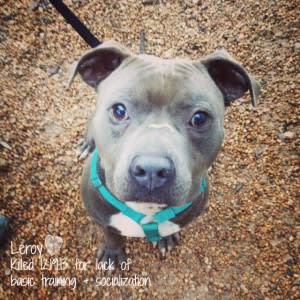 Austin, we have a problem. And we think it’s time we all get together and talk about it. All of us.
Austin, we have a problem. And we think it’s time we all get together and talk about it. All of us.
The topics we’re about to delve into are the ones we typically avoid discussing. We don’t want to rock the boat. We don’t want to hurt feelings or create anger that might make it harder for us to collaborate with each other.
We speak in qualifiers. “Austin is doing amazing things, but…” “No-kill is an incredible accomplishment, but…”
We want to talk about the but. And we want to work together to create solutions so the comma in those sentences can become a period. Austin is doing amazing things. No-kill is an incredible accomplishment. Those sentences are true. But that qualifier keeps popping up for good reason.
Another popular saying is, “No-kill is a journey, not a destination.” This we wholeheartedly believe. Getting rid of the but means being honest about where we are in that journey and working our collective butts off to get where we still need to go. We have to look at the whole picture big and small, long-term and short-term and do our very best to come together even more efficiently, effectively, and successfully for the animals of our city.
We don’t claim there is some magic bullet by which shelter and rescue utopia is created. But it’s past time to start an honest dialogue in this city. We hope against hope it’ll strike a positive note and maybe get some of us planning, creating, and working together in new ways…
1. Improve Quality of Life for Shelter Animals
 It should be common sense that happier, better-behaved animals get adopted faster and are more likely to keep their homes. There are numerous studies on the well-being of shelter animals, what stress does to their behavior, and how training, enrichment, and positive human interaction can help these animals find and keep homes more effectively. It should also be common sense that not only is this more humane, it is the only ethical choice when we decide we’re going to house animals long-term in shelters and adopt them out to the community.
It should be common sense that happier, better-behaved animals get adopted faster and are more likely to keep their homes. There are numerous studies on the well-being of shelter animals, what stress does to their behavior, and how training, enrichment, and positive human interaction can help these animals find and keep homes more effectively. It should also be common sense that not only is this more humane, it is the only ethical choice when we decide we’re going to house animals long-term in shelters and adopt them out to the community.
Of all the issues we’re touching on in this post, quality of life is the one about which we feel most strongly and have the most direct experience. It has an enormous impact on adoption rates and pet retention success. We cannot state it passionately enough. Behavioral health is just as important as medical health and behavioral neglect is just as abhorrent.
The cry for more kennels is a common one. Heard less often is the push to take better care of the animals in the kennels we already have, getting them out of the shelter faster, and keeping them in their homes so we don’t have the same dogs returning to the shelter multiple times. As you may have seen discussed recently, there is no staff position at Austin Animal Center responsible for getting the medium-large breed dogs out of their kennels for breaks. This means it is standard practice for dogs to go 24, 36, or more hours without so much as a five minute bathroom break. It also means that for the past several years, Austin’s city shelter has failed to meet the minimum care standards outlined by the Association of Shelter Veterinarians and No-Kill Advocacy Center and certainly comes far short of meeting best practice standards in the field. As noted by Cornell’s Shelter Medicine Program:
“Each shelter dog should be provided with enrichment each day. This should not be considered “extra” – it is part of the humane treatment of confined companion animals.”
There’s a continual question asked within the no-kill movement of how to save the big dogs with treatable behavior issues. They’re considered the final frontier for many. This is how you save them. You have to offer quality of life. You have to create a living environment where behaviors aren’t developing and/or escalating. Where dogs are receptive to the training process. In-shelter behavior modification is so very possible. It’s not even that hard. And frankly, some of these “big behavior dogs” don’t have any real problems other than kennel stress. Fix the shelter environment as a whole, make behavioral well-being just as important as medical well-being, and the big behavior dog problem is solved.
Because we have already written extensively on our ideas to make this happen, and because we have more to say on this subject than can realistically fit here, we will direct you to our series on The Emotional Lives of Shelter Dogs. We’ve also written our thoughts on the orange tag situation at AAC here.
2. Be Honest About Who is Still Dying
 No-kill has traditionally been defined by a 90% overall live outcome rate as standard but is also defined as saving “every healthy, treatable, rehabilitatable animal.” Just this week, the founder of the no-kill movement himself spoke out about why 90% is not good enough. In fact, the city of Austin recently published the following:
No-kill has traditionally been defined by a 90% overall live outcome rate as standard but is also defined as saving “every healthy, treatable, rehabilitatable animal.” Just this week, the founder of the no-kill movement himself spoke out about why 90% is not good enough. In fact, the city of Austin recently published the following:
“At a no-kill shelter, euthanasia is reserved for animals that cannot be saved by medical treatment or those that are too aggressive to be rehabilitated. The remaining animals are adoptable and 100 percent of adoptable animals are saved and find homes. A no-kill shelter has a save rate of 90 percent or higher.” (Source)
Except, that is not what’s happening in Austin. We are not killing dogs that are “too aggressive to be rehabilitated.” Many of the dogs killed or at-risk do not even have aggression codes. We are killing adoptable, savable dogs for treatable behavior issues. We are killing for space and putting codes on dogs to make it look like we aren’t. And we are falsely putting out misinformation like the above.
This is ethically wrong but it is also a dangerous practice that creates a false picture of who the dogs at animal shelters are, and of who dogs are in general. Saying a dog is too aggressive to be rehabilitated is a serious statement and dogs who fit that definition are extremely rare. Even allowing that a slightly larger percentage of dogs would fit the definition of not currently adoptable and unsafe to house in the shelter environment and/or not able to be rehabilitated within the shelter environment, we are talking about a very small subset of dogs, far smaller than those at-risk and being killed at our city shelter.
If these dogs were dangerous or suffering, we wouldn’t be willing to place them into the community in their current state, but we are. These dogs are available for foster, adoption, or rescue placement up until the moment they die. We plea foster for a dog with kennel stress and instead of creating a behavior plan to support them in-shelter when foster isn’t found, we kill them. We kill them because kennels are full and because as a self-named no-kill leader, we still do not have the behavior and enrichment programming to support our shelter’s dogs.
Not only are these treatable behavior issues, many of them are largely shelter-specific and most of them could be improved or avoided if we look back to number two: quality of life. That should be our answer to behaviors brought on by shelter stress, not killing adoptable dogs.
And because it is important to be clear, aggression is almost always a treatable behavior as well. There are absolutely times when it makes a dog not safely adoptable but aggression itself is a nuanced behavior, not an overall state or disposition of a dog. When we are talking about dogs killed under an aggression code, we are often talking about dogs who are scared, confused, in pain or suffering from an (often undiagnosed) medical condition, and are using distance increasing behaviors like lip curls, growls, directed barks, or air snaps to let a human know they want space. Of course there are the outliers, the rare dogs who come in from serious bite cases, but many of these dogs have no bite history at all. And again, for the sake of clarity, it is important to point out that “good” dogs bite too.
3. Respect Each Other
 Seriously. The snark, the gossip, the mean-spiritedness, the old grudges, the lack of trust and accusations. We’ve seen enough of the ugly side of shelter and rescue to last a lifetime and we’re sad and embarrassed to say we’ve also been a part of it. In fact, if you really shine that light into the dark corners, we think you’d be hard pressed to find a long-termer who hasn’t lashed out in moments of stress.
Seriously. The snark, the gossip, the mean-spiritedness, the old grudges, the lack of trust and accusations. We’ve seen enough of the ugly side of shelter and rescue to last a lifetime and we’re sad and embarrassed to say we’ve also been a part of it. In fact, if you really shine that light into the dark corners, we think you’d be hard pressed to find a long-termer who hasn’t lashed out in moments of stress.
We’re not bad people. None of us are. And we don’t get to compete over who loves animals more or who saves them better. To be sure, there are genuine differences of philosophy within this community that bear thoughtful discussion and consideration. But we ARE all working towards the same goal. At the simplest and most basic, we are all animal lovers who want to save lives. Cat people. Dog people. All the little niches within and in-between. We have more in common than not.
For a bunch of crazy animal people, maintaining our objectivity, and being positive and respectful of our fellow humans, even when their opinions differ from ours, can be the hardest part of this work. We speak from experience on that front. Give us an endless supply of naughty dogs but damn the person that gets in our way. It’s easy to project, to define someone else as a problem. It’s harder to identify how you can work together. We need to be each others’ allies and we need to make sure we are collaborating in a way that maximizes our effectiveness, plays to our strengths, and saves as many lives as efficiently as we are capable of at our best.
Discussing the issues in this post is something we’ve held back on doing for this very reason. These issues are, for the most part, systemic. The responsibility for moving forward is collective and something we can do better if we can find a way, for once, to do it together.
…
 A colleague here in Austin is fond of saying that everyone wants to save the dog in front of them. It’s true. But if we can’t look past this dog, right now to see the programming and approaches that are needed long-term, we’re never going to get out of our state of constant emergency. There will always be a risk list. There will always be a lack of space. And we’ll continue having to say that we’re doing really great, but …
A colleague here in Austin is fond of saying that everyone wants to save the dog in front of them. It’s true. But if we can’t look past this dog, right now to see the programming and approaches that are needed long-term, we’re never going to get out of our state of constant emergency. There will always be a risk list. There will always be a lack of space. And we’ll continue having to say that we’re doing really great, but …
Yes, we need to save the dog in front of us. But we also need to lift our heads and look forward at all the animals yet to come.
